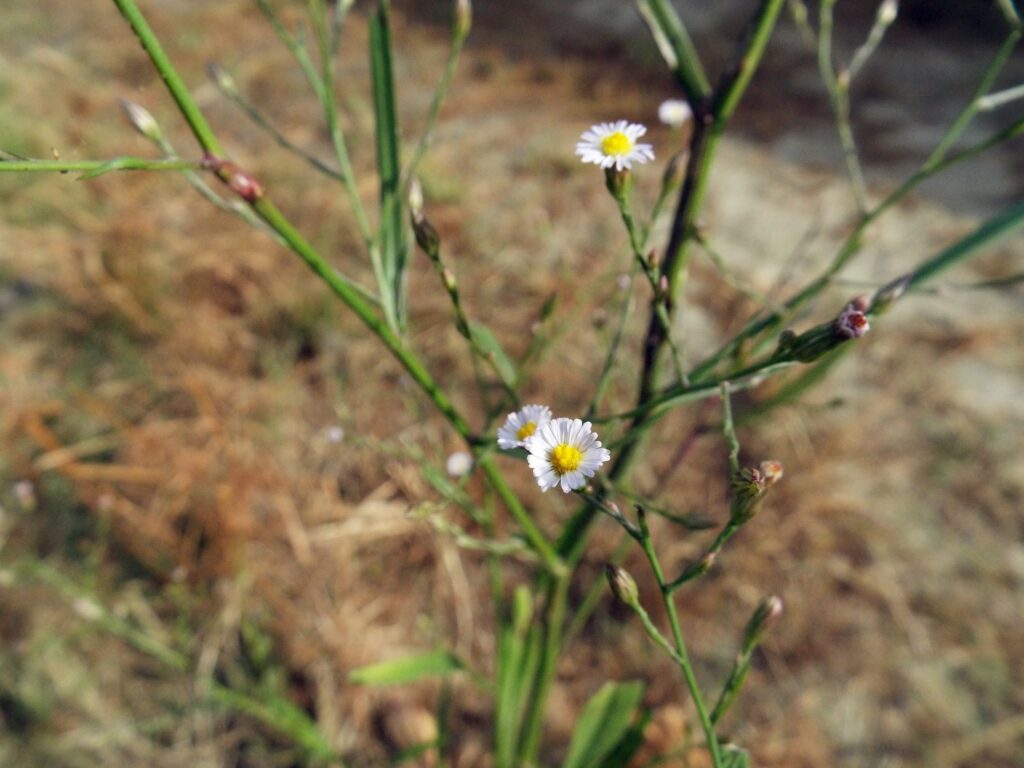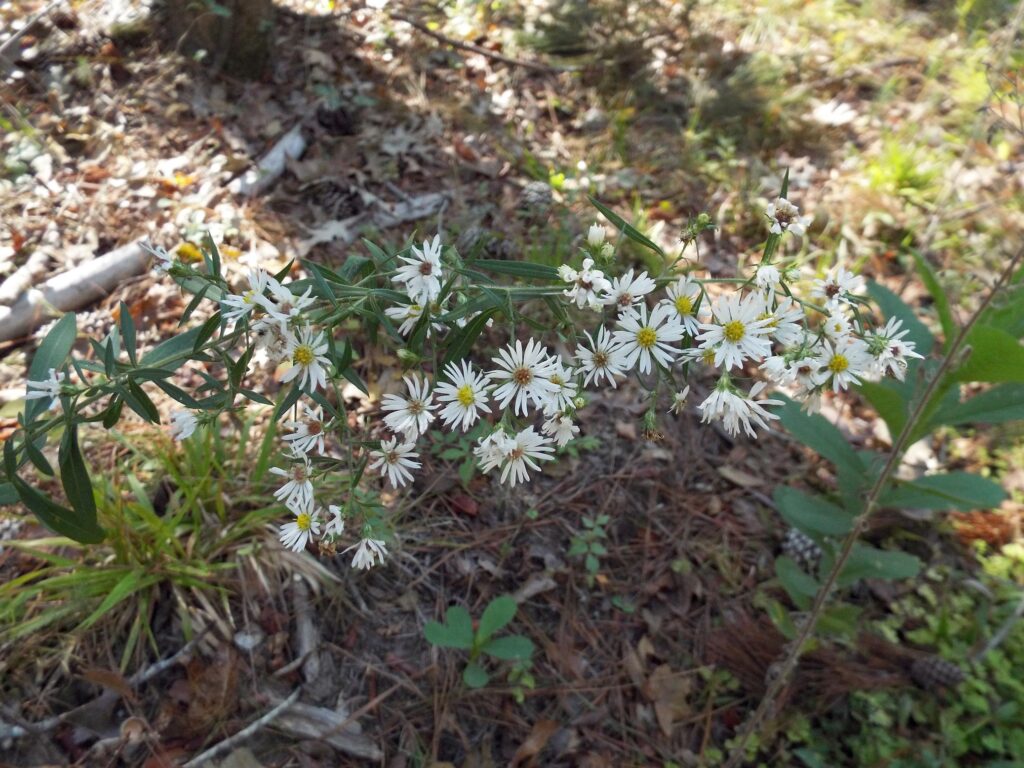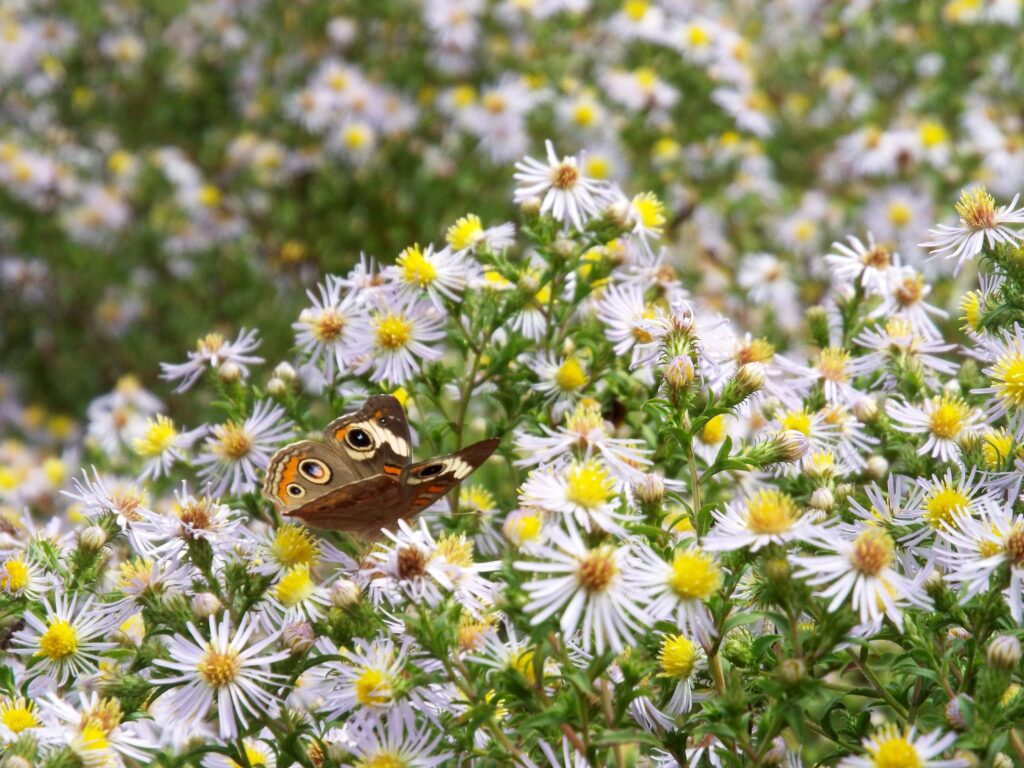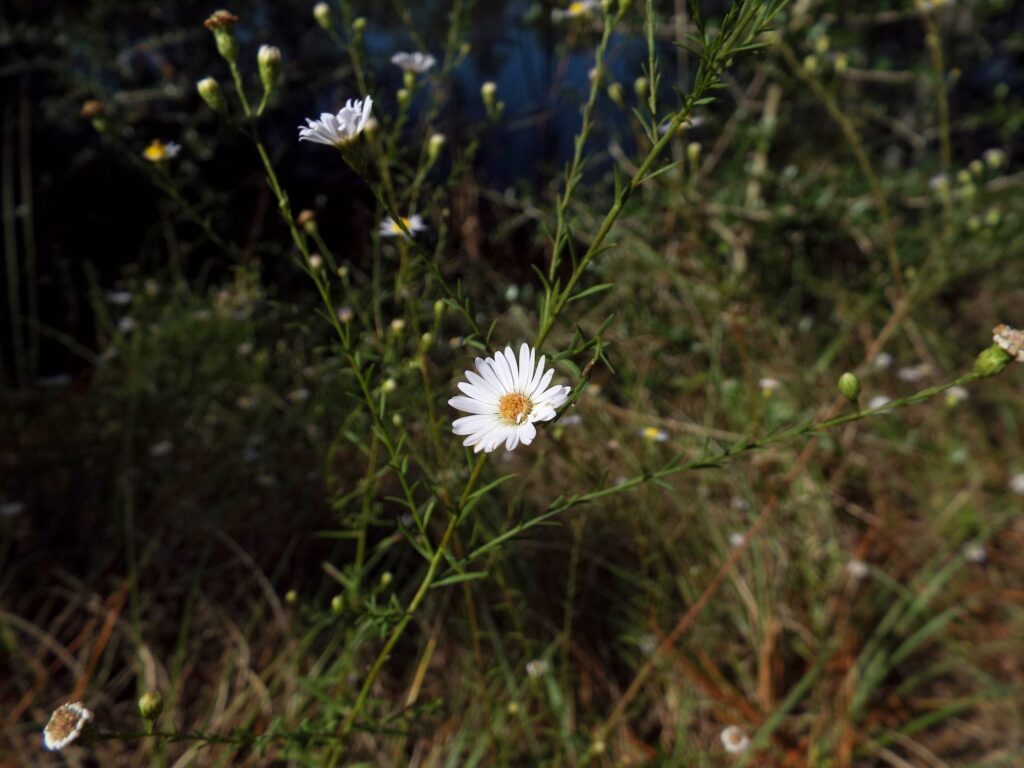


This week for Flora and Fauna Friday, we have a genus of shrubby wildflowers on the docket. This week we’re looking over the North American Asters, genus Symphyotrichum.
There are about 24 species of this Aster genus found in South Carolina. Just over half of those are found in our area. All of our dozen or so species are similar in a few key ways. They’re all small herbaceous shrubs, they all have many-petalled white and pink flowers that bloom in later summer and fall, and they all have wind dispersed seeds. This makes this genus easy to identify from other wildflowers. Conversely, that means it’s difficult to tell the individual species apart. Thus, I’ve only highlighted three species of Aster that are unique or important in some way.

Elliott’s Aster (S. elliottii) is a wetland species of Aster that’s rare in the Lowcountry. It’s quite large, stout, and prolific perennial Aster that spreads rhizomatically, or by its roots. Rhizomatic growth allows the plant to form dense clumps in its native wetland habitats. These wetlands are highly competitive for light and space and hard for seedlings to take hold in. So spreading through its roots gives the plant access to more resources, to produce more seeds, to have a better chance of one floating to a good habitat. Its flowers bloom at the end of September and are quite large and prolific in both volume and nectar. They are a tremendous nectar source for pollinators of all shapes and sizes. This is the same species found at Roxbury Park that draws in thousands of migrating butterflies every Fall.

Perennial Saltmarsh Aster (S. tenuifolium) is one of those very few wildflowers that grows exclusively in the saltmarsh. It’s particularly thin and wiry in appearance. It’s glimmering white flowers can be found strewn throughout the high saltmarsh in late September through October. Opalescent gems floating on a stagnant sea of Spartina and sand.

Bushy Aster (S. dumosum) is our most common Aster. This perennial species can grow five feet tall and is found in open sunny habitats. Its stems are stiff and thin, its leaves are thin and small, and its flowers are small but numerous. Bushy Aster is an important nectar source for smaller pollinators, like miner bees and skipper butterflies. The flowers are perfectly sized for these diminutive insects. Larger bees, wasps, and butterflies usually won’t visit these tiny flowers because, to them, they’re more of a hassle than they’re worth. That means these small pollinators don’t have to compete with the larger insects for nectar and can feed without being driven away by the bigger bugs.